#robin’s plantain
Text
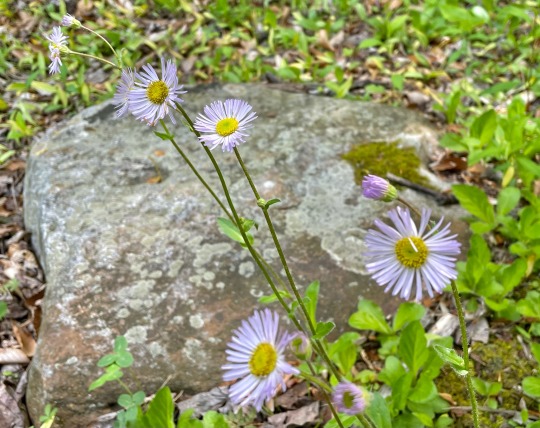
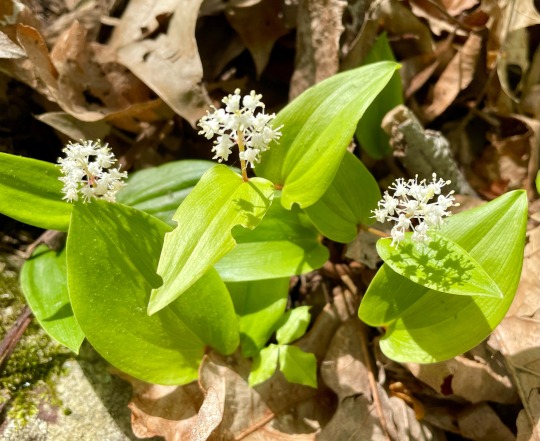
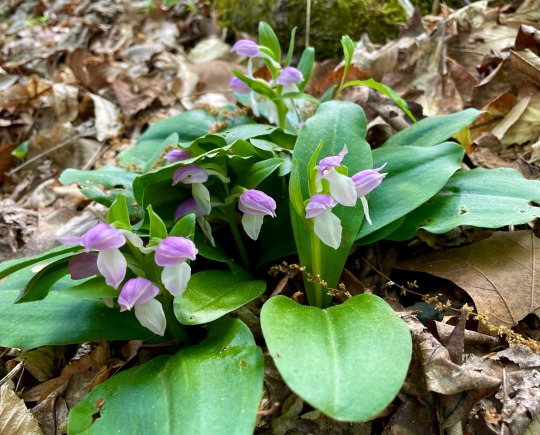
Early wildflowers are done but there are still things in bloom in the woods. Among them: Robin’s plantain, Canada mayflower, and showy orchis.
#pennsylvania#wildflowers#native wildflowers#robin’s plantain#canada mayflower#showy orchis#may#spring ephemerals
278 notes
·
View notes
Video
n419_w1150 by Biodiversity Heritage Library
Via Flickr:
Wild flowers east of the Rockies /. New York :Doubleday, Page,1910.. biodiversitylibrary.org/page/20647222
#United States#Wild flowers#University of California Libraries (archive.org)#bhl:page=20647222#dc:identifier=http://biodiversitylibrary.org/page/20647222#flickr#rattlesnake weed#canada hawkweed#hieracium venosum#Robin’s plantain#rattlesnakeweed#hieracium canadense#Hieracium umbellatum#Canadian hawkweed#narrowleaf hawkweed#northern hawkweed#hawkweed#Hieracium#botanical illustration#scientific illustration
0 notes
Photo






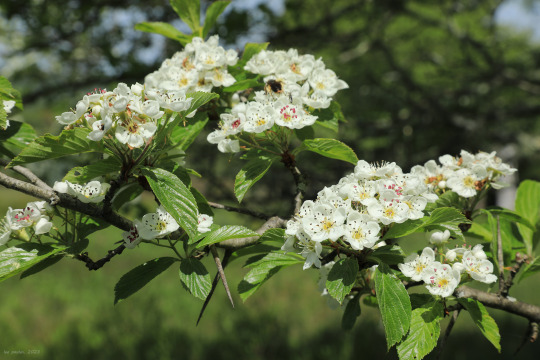

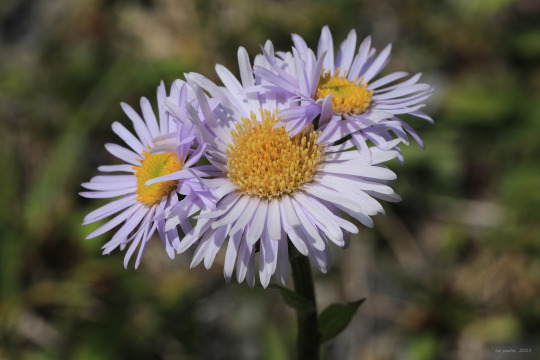
One of the many beaver-engineered wetlands complexes in Canaan Valley. The dam, now over-grown with sedges and cattails, is as impressive a feat of engineering for rodents as the Hoover Dam is for human beings. More to the point, beavers are the key drivers to the ecological well-being of Canaan Valley’s extensive wetlands, and for the most part, staff at the National Wildlife Refuge and Canaan Valley State Park let them do their thing - to the point of occasionally letting them flood boardwalks and trails.
From top: spring cress (Cardamine bulbosa), a wetlands-loving relative of the toothworts, which is similarly edible; false green hellebore (Veratrum viride), a potentially-deadly mountain beauty, whose alkaloid-laden leaves and roots can cause cardiac arrest if ingested in sufficient amounts; dotted hawthorn (Crataegus punctata), an important food and shelter tree for wildlife in the valley; woodland strawberry (Fragaria vesca L.), distinguished from the similar wild strawberry (Fragaria virginiana) by sepals that point backwards and seeds on the surface of the fruit; and Robin’s plantain (Erigeron pulchellus), the most impressive and beautiful of the spring fleabanes in Central Appalachia.
#appalachia#vandalia#west virginia#allegheny mountains#canaan valley#canaan valley state park#wetlands#beaver pond#spring cress#false green hellebore#corn lily#dotted hawthorn#white haw#woodland strawberry#robin's plantain#flora#wildflowers#may#spring
61 notes
·
View notes
Photo

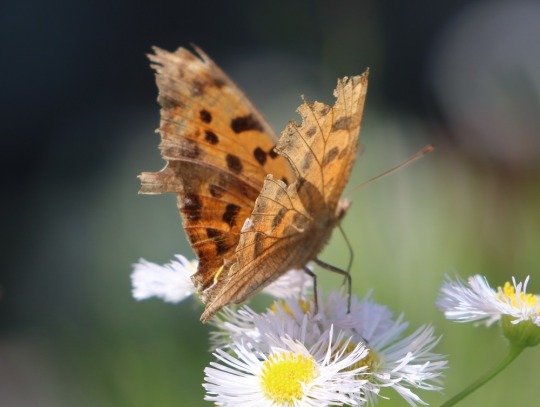
ぼろぼろのキタテハがいた(4月10日)
#Polygonia c-aureum#Asian comma#butterfly#motyl#Erigeron philadelphicus#Philadelphia fleabane#common fleabane#daisy fleabane#frost-root#flowers#kwiaty#japan#marsh fleabane#robin's-plantain#insects#owady
10 notes
·
View notes
Text
Chemically sterilized...or mechanically sterilized?
It is clear that applying chemicals to your yard and landscape, be it fertilizers, weed killers, or pesticides, has devastating effects to the community of life that is present in every place.
But is the terrifying decline in insects explainable by chemicals alone?
When i am in mowed environments, even those that I know have no lawn chemicals, they are almost entirely empty of life. There are a few bees and other insects on the dandelions, but not many, and the only birds I see are American robins, Grackles, and European starlings.
Even without any weed killers at all, regular mowing of a lawn type area eliminates all but a few specially adapted weeds.
The plants of a lawn where I live include: Mouse ear chickweed, Birds-eye Speedwell, Common blue violet, Dandelion, Wild Garlic, Creeping charlie, White Clover, Black Medick, Broad-leaved plantain, Mock Strawberry, Crabgrass, Small-flowered Buttercup, Ribwort Plantain, Daisy Fleabane, a few common sedges, Red Deadnettle...That sounds like a lot of plants, but the problem is, almost all of them are non-native species (Only Violets, Daisy Fleabane, and the sedges are native!) and it's. The Same. Species. Everywhere. In. Every. Place.
How come...? Because mowed turf is a really specific environment that is really specifically beneficial to a number of almost entirely European plants, and presents stressors that most plants (including almost all native north american plants) simply can't cope with.
The plants mentioned above are just the flowering weeds. The grasses themselves, the dominant component of the lawn, are essentially 100% invasive in North America, many of them virulently and destructively invasive.
Can you believe that Kentucky bluegrass isn't even native to Kentucky? Nope, it's European! The rich pasture of the Bluegrass region of Kentucky was predominantly a mix of clover, other legumes, and bamboo. The clovers—Kentucky clover, Running buffalo clover, and buffalo clover—are highly endangered now (hell, kentucky clover wasn't even DISCOVERED until 2013) and the bamboo—Giant rivercane, Arundinaria gigantea—has declined in its extent by 98%. Do European white and red clovers fulfill the niches that native clovers once did? Dunno, probably not entirely.
One of the biggest troubles with "going native" is that North America legitimately does not have native grass species that really fill the niche of lawn. Most small, underfoot grassy plants are sedges and they are made for shady environments, and they form tufts and fancy sprays, not creeping turf. Then there's prairie grasses which are 10 feet tall.
What this means, though, is that lawns don't even remotely resemble environments that our insects and birds evolved for. Forget invasive species, lawns are an invasive BIOME.
It's a terrible thing, then, that this is just what we do to whatever random land we don't cover in concrete: back yards, road margins, land outside of churches and businesses, spaces at the edges of fields, verges at bypasses and gas stations...
Mowing, in the north american biomes, selects for invasive species and promotes them while eliminating native species. There's no nice way to put it. The species that thrive under this treatment are invasive.
And unfortunately mowing is basically the only well-known and popular tool even for managing meadow and prairie type "natural" environments. If you want to prevent it from succeeding to forest, just mow it every couple of years.
This has awful results, because invasive species like Festuca arundinacea (a plant invented by actual Satan) love it and are promoted, and the native species are harmed.
Festuca arundinacea, aka Tall Fescue, btw is the main grass that you'll find in cheap seed mixes in Kentucky, but it's a horrific invasive species that chokes everything and keeps killing my native meadow plants. It has leaves like razor blades (it's cut me so deeply that it scarred) and has an endosymbiont in it that makes horses that eat it miscarry their foals.
And this stuff is ALL OVER the "prairie" areas where I work, like it's the most dominant plant by far, because it thrives on being mowed while the poor milkweeds, Rattlesnake Master and big bluestems slowly decline and suffer.
It's wild how hard it is to explain that mowing is a very specific type of stressor that many plants will respond very very negatively to. North American plants did not evolve under pressures that involved being squished, crushed, snipped to 8 inches tall uniformly and covered in a suffocating blanket of shredded plant matter. That is actually extremely bad for many of the prairie plants that are vital keystone species. Furthermore it does not control invasive species but rather promotes them.
Native insects need native plant cover. Many of them co-evolved intimately with particular host plants. Many others evolved to eat those guys. And Lord don't get me started on leaf removal, AKA the greatest folly of all humankind.
So wherever there is a mowed environment, regardless of the use of chemicals or not, the bugs don't have the structural or physical habitat characteristics they evolved for and they don't have the plant species they evolved to be dependent on.
Now let's think about three-dimensional space.
This post was inspired when I saw several red winged blackbirds in the unmowed part of a field perching on old stems of Ironweed and goldenrod. The red-winged blackbirds congregated in the unmowed part of the field, but the mowed part was empty. The space in a habitat is not just the area of the land viewed from above as though on a map. Imagine a forest, think of all the squirrels and birds nesting and sitting on branches and mosses and lichens covering the trunks and logs. The trees extend the habitat space into 3 dimensions.
Any type of plant cover is the same. A meadow where the plants grow to 3 feet tall, compared with a lawn of 6 inches tall, not only increases the quality of the habitat, it really multiplies the total available space in the habitat, because there is such a great area of stems and leaves for bugs and birds to be on. A little dandelion might form a cute little corner store for bugs, A six foot tall goldenrod? That's a bug skyscraper! It fits way more bugs.
It's not just the plants themselves, it's the fallen leaves that get trapped underneath them—tall meadow plants seem to gather and hoard fallen leaves underneath. More tall plants is also more total biomass, which is the foundation of the whole food chain!
Now consider light and shade. Even a meadow of 3ft tall plants actually shades the ground. Mosses grow enthusiastically even forming thick mats where none at all could grow in the mowed portions. And consider also amphibians. They are very sensitive to UV light, so even a frog that lives in what you see as a more "open" environment, can be protected by some tall flowers and rushes but unable to survive in mowed back yard
#anti lawn#kill your lawn#native plants#the ways of the plants#native plant gardening#plants#random#bitching about mowing again
853 notes
·
View notes
Text
Some things I’ve been thinking about. At times being an American trad witch is incredibly frustrating and at others it’s absolutely exhilarating, rewarding. Reconnecting with my ancestral ( primarily french and scottish ) lore, magical practices, witchcraft etc has and will continue to inform my practice but I’ll never be a “french” witch. I’ll never be a “scottish” witch. I can find a lone hawthorn or a sacred tree guarding a hidden spring to tie the cloutie to, I can divine via a snail’s mucus trail, Fly to the Sabbath to meet The Abbess, heed the Dame Blanches, pluck the golden bloom with songs to St Columba, safeguard me and mine via silver, spring water and juniper. Yet there’s many things I’ll never know or be able to do. Whether that’s because these things are so tied to the land or a specific place, language barriers, ( working to overcome this one ) or due to the ( well warranted) gate keeping of lore and practices.
This used to be a source of great confusion for me. I think because I was afraid( due to my previous new age fuckwittery ) to experiment, do anything other than what I understood as “traditional”. My understanding being too rigid at the time; the pendulum swung from one end of the spectrum to the other. This delayed my progress and “froze” me. I was left wondering what an “American” trad craft would look like; most our books do come from a European POV. Learning of our own magical traditions as well as those of my Canadian family ( still working on that one haha ) helped. Reading Robin Kimmere helped. Reading Schulke, him being an American and writing on American plants, helped too. I’ve come to know Sugar Maple and Plantain as powerful spirits. Both teaching important lessons on how to rectify my ancestors mistakes, to foster relations with the First Peoples and how to incorporate the magic of this land into my craft. Rather than being frustrated by my being American I see it as a challenge now. I get to explore spirits, plants, places, animals, spiritual/physical ecologies ( is even really a difference between these?) completely unknown to my ancestors. I get to reconcile the old and the new. To learn from Spirit Direct. Tradition isn’t the worship of ashes, it’s the preservation of Fire. New wood must be added to keep The Fire burning. The Devil of this land certainly is a spirit of the unknown.
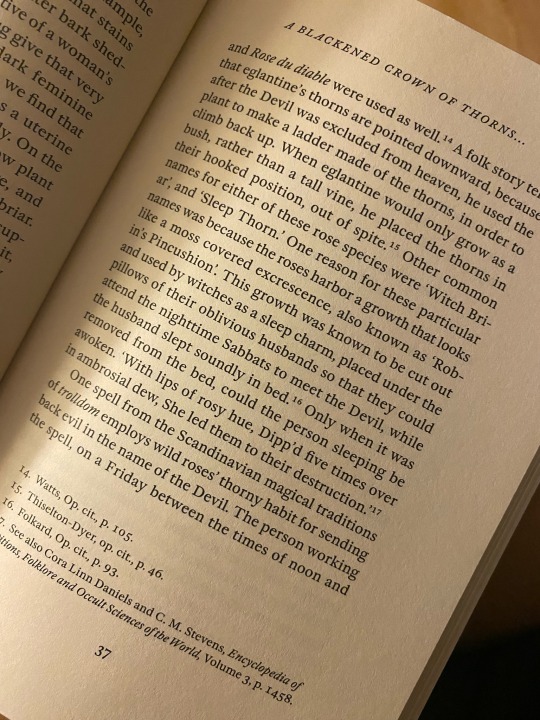
I am the land, the land is me.
I don’t own it, to it I owe all.
To it my body will return, the tithe paid.
I’m not rolling hills of heather, white chalk cliffs, the monk’s island nor the azure coast. The memories of these places echo distantly in my blood, sung alive by my ancestors shades. Part of me they’ll always be; yet it’s not who I am. Not what I am.
I’m craggy shores, dull-jade waves bearing down upon the tired rocks. I am musky pine forests veiled in mist. Sun-venerating oaks hugging the shoreline. Bleeding alders in damp ground swelling. Proud maples sustaining generation upon generation with their boiled blood. Death-grey clay, exposed by running spring.
I am the kudzu, the itching moth, the knotweed, the Norway maple, the ivy wrecking havoc upon the land. My surname and light skin proof of a genocide ongoing. I am my ancestors sins; the specter of the Old Growth forests, their grief hanging over the land like a fog. Every interaction with The Land tinged with sadness, loss.
I am my maternal side’s copper curls. Melusine’s pride. Ave Landry! Ave Gauthier! Forebears mine.
I am my paternal side’s grief. The end result of decades of cultural warfare. The Jesuits stole our name….my hair will not be cut.
Never will I libate these glacier carved valleys with booze.
I am the plantain, learning a kinder way. The sumac reclaiming the orchard.
My Februarys, my Marches aren’t snow drops and daffodils peaking through the frozen ground. They’re steely skies and walls of sleet. Bloodroot heralds winters wane; not Brigid’s flower.
My June isn’t fields of poppies, it’s seas of crimson staghorn blooms skyward reaching.
My augusts aren’t golden shafts of wheat, swaying in summer’s last breaths; they’re explosions of neon-violet and honey-yellow. Corn ripening on the vine, supporting the climbing bean. The cicadas song reverberating.
Old Michaelmas marks harvest’s end, October potatoes long buried in soils darkness finally exhumed. The Devil his Rosy Briar to ascend and plunge.
With Novembers first snows the Dead come in.
I’ll never process around a standing stone nor know what it is to live and eat off the land my dead lay in. Finally, I’m learning to be at peace with this. To love and know the land I live on. I’ll always be a stranger here, a guest. I hope to be a good one.
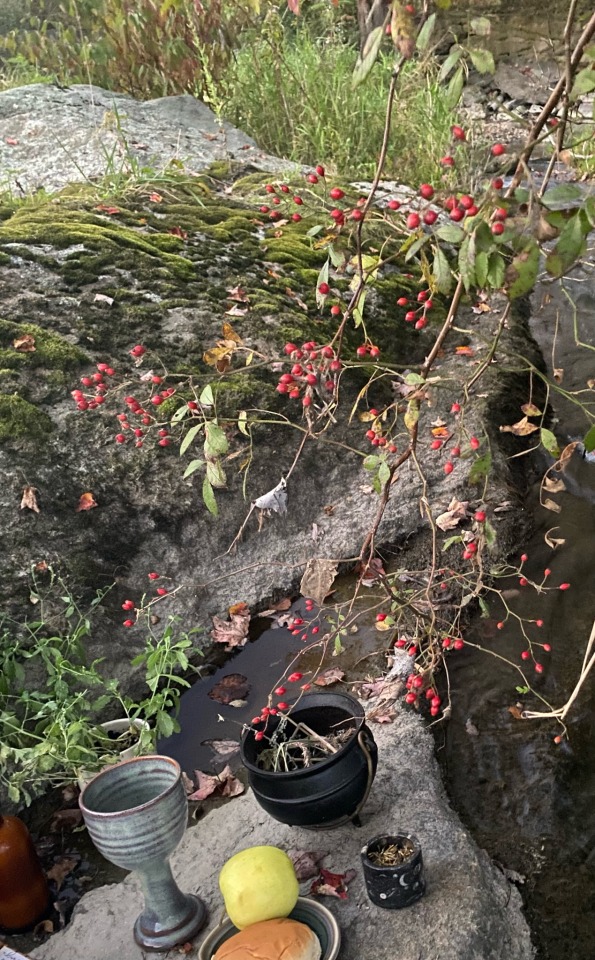
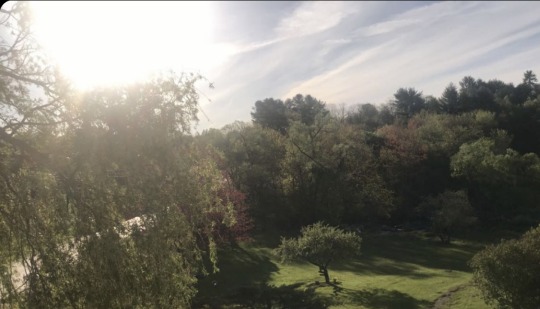
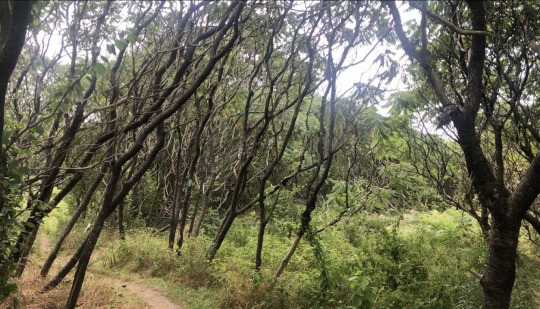
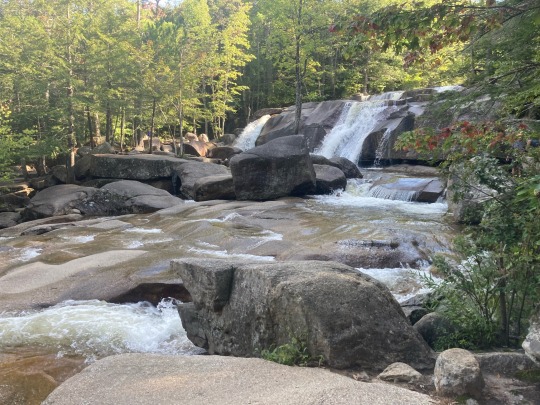
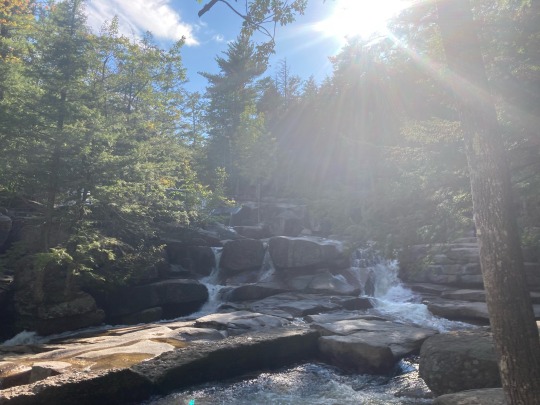
#folk magic#tradcraft#traditional witchcraft#witch#folklore#magic#magick#traditional craft#witchcraft#occult#animism#animist#animistic#animists#witches#indigenous#reparations#Michaelmas#native plants#invasive plants#ancesters#ancestry#ancestral veneration#American witch#American witchcraft#Daniel schulke#traditional American witchcraft#American traditional witchcraft#Corrine Boyer#poetry
91 notes
·
View notes
Text
"The main Batboys"I am going to DROWN YOU IN THE FUCKING LAZARUS PIT IF YOU DON'T CUT THAT SHIT OUT.Don't lie to yourself-Jason wouldn't be caught undead near Dick,Damian and especially not Tim all at once unless Duke was there too and if you offered him money to go he'd lie about doing it and then use it to buy gifts for Duke."FUCK you fuckass replacements,Duke's MY Robin" < An actual canon Jason quote,trust me i read comics.Also if you include Cass in your Reverse Robins aus but not Duke,i'm sending you the plantain fields and if you count Stephanie as a Batkid but not Duke either,name a Superfam or Flashfam or Wonderfam or Arrowfam woman.You've got all day just like Duke does but you probs didn't know because you were too busy rewatching Danny Phantom instead of developing a personality and romantic relathionships
#duke and jason#the batboys#duke thomas#jason todd#duke is a robin#duke is a batboy#black jason todd#latino jason todd#afrolatino jason supremacy#cassandra cain#stephanie brown#stephcass#blasian stephanie brown#batfam#we are robin#rhato#the outlaws#outlaw!duke#the abnormals#the lights#the anomalies#reality warper duke#eris(batman)#anti batcest#batfanon slander#trans 4 trans and autistic 4 autistic found family realness#💌#summerposting
35 notes
·
View notes
Text

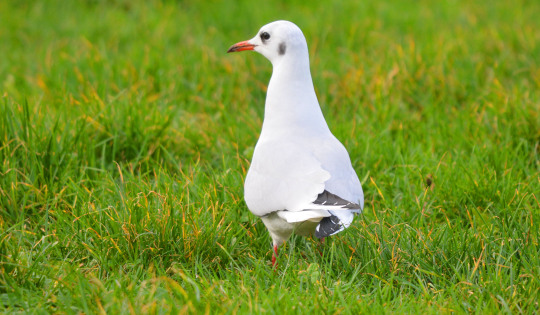




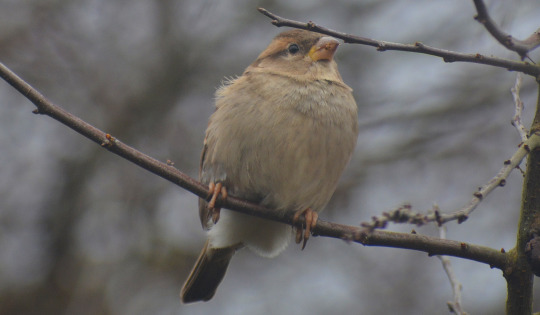



22/12/2023-Lakeside and home
Photos taken in this set are of: 1. Starlings in the garden. 2 and 3. Black-headed Gull on the green out the front, one a few I really enjoyed seeing there at lunch time. 4. An eyecatching Jay which it was joyful to watching picking at the ground at Lakeside, a key bird moment of my day I was thrilled to see it. 5, 6 and 9. Views at Lakeside on my lunch time walk. 7. House Sparrow beside the allotments at Lakeside, it was immersive and lovely to watch these bustling birds and hear their sweet shriek in the bushes by the allotments. 8 and 10. Another pretty and intense sunset this evening.
Magpie, a prominent Carrion Crow in a tree, Blackbird, Robin, Blue and Long-tailed Tits, Tufted Duck, Great Crested Grebe, Coot, Moorhen, dashing Herring Gull and Cormorant enjoyed again the latter in flight, intimate views of Grey Squirrels dashing around, daisy, plantain, old man's beard, some eycatching dock leaves probably broad-leaved dock and moss or lichen were other highlights on my lunch time walk. At home today it was thrilling to see Blue Tit in the garden with House Sparrow and Starlings gathering together on the roof out the back and Jackdaw and Magpie enjoyed at home today too.
#blue tit#starling#house sparrow#dock#leaves#2023#earth#nature#december#lakeside#lakeside country park#tufted duck#coot#jay#crow#beautiful#photography#birdwatching#birds#flowers#robin#grey squirrel#outdoors#walk#walking#lunch time walk#friday#sunset#home#carrion crow
10 notes
·
View notes
Text
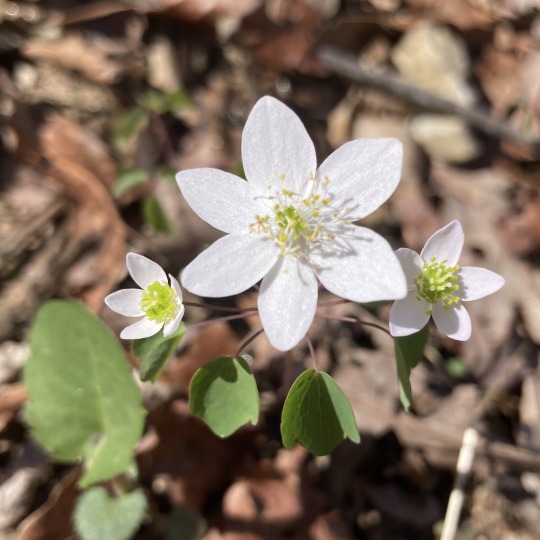


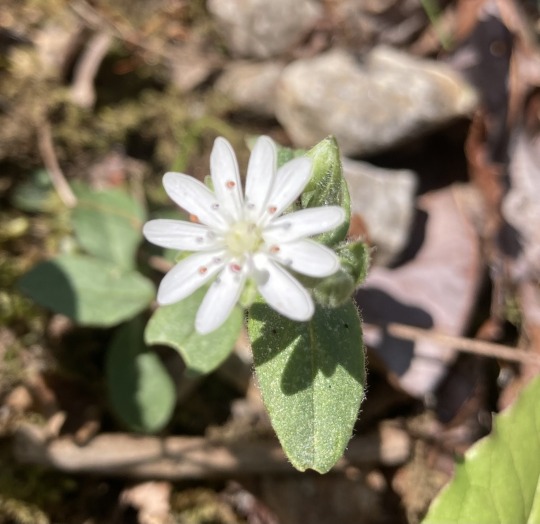
Some fiddlehead ferns and pretty little wildflowers from today's hike (rue anemone, robin's plantain, star chickweed)
5 notes
·
View notes
Text
Creating a Backyard Land Spirit Profile
Working with land spirits can help connect you with your local ecosystem, and for some practitioners is a crucial aspect of bioregional magic. Some folks, like myself, consider themselves to be initiated by one or more land spirits.
When I use the term land spirits, I am referring to a few different things. First are the collective spirits of various plants, animals, and insects present in a specific bioregion. An example of collective, in this context, means that if I'm petitioning help from the spirit of violets, I am working with the spirit of all violets present in that area rather than a singe flower that grows in my yard.
The next is the land guardian, which in my practice is a more powerful spirit with claim over a specific territory, like a forest, river, or neighborhood.
Sometimes these two concepts are separate and sometimes they're interchangeable. It all depends on personal practice, culture, local folklore, etc.
One thing that has been extremely beneficial to my practice has been creating a backyard land spirit profile. This method has been useful for spirit work and "green" magic, but more importantly, it's helped me immerse myself in my local ecosystem and I get to meet a lot of cool animals and plants.
Here is an over-simplfied example of my backyard land profile:
Ecosystem: Central Interior and Appalachian: Mixed woodlands, close to possible floodplains
Soil Type: Clay in garden bed, Loamy near/beneath shrubs, Sandy in sunny areas of the lawn
Flora:
Cultivated- Paradise Apple, Highbush Blueberry, Rose of Sharon, Dog Rose, Black-Eyed Susan, Sundial Lupine
Native - Bloodroot, Wild Strawberry, Common Violet, Wrinkle-Leaf Goldenrod, Blue Wood-Aster, Horseweed, Fireweed, Deer-Tongue Witchgrass, Common Milkweed
Invasive - Round-Leaved Bittersweet, Yellow Toadflax, Creeping Bellflower, Common Mugwort
Naturalized - Dandelion, Broad-Leaf Plantain, Deadly Nightshade
Notes - Various mosses, unidentified mushrooms growing on lawn and lichens found on some trees/shrubs.
Fauna:
Mammals - Raccoon, Opossum, Striped Skunk, Grey Squirrel, Chipmunk, Feral Cats, Deer mouse, House Mouse
Birds - Cardinals, Chickadees, Catbirds, American Robin, Downy Woodpecker, Turkey Vulture, Crow
Reptiles and Amphibians - N/A
Fish - N/A
Invertebrates - Dotted Wolf Spider, Leopard Slug, Tiger Bee Fly, Monarch Caterpillars, Peach Root Weevile, Narrow-Winged Mantis, Fireflies
Ecoregion and Soil Type
The first thing I did was determine what type of ecosystem my yard used to be. In an urban/suburban area this was a bit challenging.
I started by identifying a few wild plants and finding out where they usually grow. Most of them seemed to prefer shady woodlands and rich soil. There were also a couple of pioneer species present in the sunnier and more disturbed areas of the yard.
Next, I took a look at surrounding wild areas. We are close to a mountain and a large river. There are woodlands near and within the city made up of mostly hardwood and conifer trees. I knew from memory that certain areas close to my home are likely floodlands.
After that, I found a bioregion map of my country which showed that my state fell under the category of Central Interior and Appalachian. I searched this region on landscope.org and was able to determine my specific ecoregion (not shared here for privacy reasons).
From there I started making educated guesses. I determined that my backyard was likely a mixed hardwood and conifer woodland sitting very close to what might have been a floodplain.
For my soil type, I took samples from different areas of my yard and used an online guide to determine what kind of soil I had. Most of it was sandy or loamy, but my flower beds seemed to have some clay.
Using all this information, I had a general idea of what kind of plants and wildlife would be present without human intervention. It also helped with deciding which native plants to start growing.
Plants
Throughout the year, I went out to the yard with a wildlife field guide and a couple identification apps and identified every plant and insect I found. I grouped the plants into four categories: native, invasive, naturalized, and cultivated. This isn't shown in the example, but I also grouped them by season and the time of year they appear.
Naturalized refers to plants that have integrated themselves into the environment without inflicting damage to the local ecosystem.
You'll notice that under the cultivated section I included a few native plants. This is because those plants were introduced by me and would not be present without my intervention and I wanted to make that distinction.
The importance of native and naturalized plants is obvious, but what about cultivated and invasive? Keeping a profile of invasive plants helped me keep a record of which noxious weeds I need to remove. From an ecological perspective, their removal is crucial to the survival of my native plants and garden crops. From a spiritual perspective, this can be an offering or act of service to the local land spirits. Some of these plants, like Common Mugwort, are both valuable for workings and fine to harvest in large quantities since they are invasive.
Cultivated plants are also important. Many of these plants, like my Blueberries, Apples, and Rose of Sharon, were here before me. The importance of plants introduced by humans is greater than you'd think. First, they are usually crops and flowering plants and provide food for both humans and the local wildlife. Secondly, I live in an urban area, and my land spirits are likely very closely associated with people.
I researched all of my plants and took note of growth patterns, toxicity, medicinal uses, ediblity, native region/habitat, ecological significance/impact, etc. Then I moved onto folklore and symbolism and started working with the spirits of a few plants, performing divination, leaving offerings, harvesting them and including them in rituals and spellwork. I did this in groups to avoid feeling overwhelmed.
Please note that you should always properly identify plants and be aware of potential toxicity before harvesting, especially if you plan on burning or consuming said plant. Also steer clear of protected or threatened plants and keep harvest to a minimum even for abundant native species.
Wildlife
My next project was writing down every species of animal and insect that I had encountered in my yard. I grouped them into several categories: mammals, birds, reptiles, amphibians, fish, and invertebrates. In real life my invertebrates section is separated into several subcategories (orb weavers, beetles, etc.).
Next, I used basically the same system I did for plants, researching their native range, preferred habitat, behavior, diet, ecological importance. Then I started looking into folklore.
Finally, I started integrating them into my practice and working with their collective spirits. This involved using animal symbolism in rituals, leaving offerings, and performing a lot of divination.
Remember to never interact with or directly feed wildlife. If I'm making offerings outdoors it is usually fresh water, scattered birdseed, and acts of service like creating habitats and growing plants that a specific species enjoys. If scattering birdseed, do so in the morning to keep too many animals, like raccoons, from entering your yard at night.
Side note: Keep a record of what appears in your yard each year! For example one year we had several chipmunks and one year I saw none. One year we had no fireflies and the next our backyard was covered in them.
Tying It All Together
Once I had my backyard profile completed, I started working with the collective spirits of select species. I have an offering schedule, perform communication, and petition these spirits regularly in spellwork. I use certain plants that I harvest for offerings and use for tinctures, infusions, cooking, and crafts. I use symbols of local animals in crafts and spellwork.
After working with the "smaller" spirits, you can start seeking out specific land guardians by using a combination of divination and research of local history and folklore.
On a mundane level, I am now able to cultivate an appropriate ecosystem for the local wildlife and start projects to support it. Examples of this are pollinator gardens, stick and brush piles for fireflies and small animals, growing seed-rich and fruiting plants for birds and mammals, winter shelters and TNR plans for feral cats, and more.
I also like to take notes on plants and wildlife that I encounter in my general area that don't usually make it into my backyard. For example there have been coyotes, foxes, bobcats, and black bears spotted in my neighborhood.
I want to stress that I live in a semi-urban and relatively populated neighborhood and I have a small yard. The brief example of of my land profile doesn't cover even a fraction of the wildlife I have encountered in my backyard. There is so much life in urban and suburban areas in need of our support.
#bioregional magic#spirit work#green witchcraft#land spirits#witchcraft#plant magic#local witchcraft
4 notes
·
View notes
Text
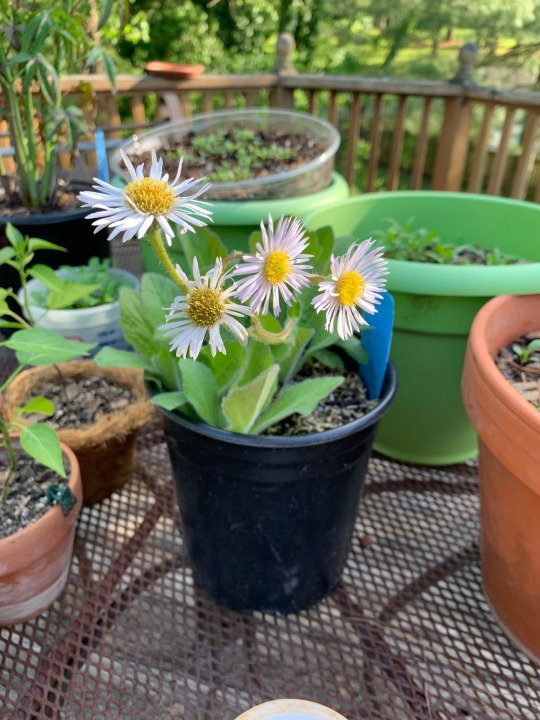
Robin’s Plantain just starting to show off
6 notes
·
View notes
Text

Possibly Erigeron pulchellus, AKA Robin's plantain, blue spring daisy or hairy fleabane.
#Bruce Trail#Boyd Crevice#Sydenham section#Niagara Escarpment#Bruce County#Ontario#Canada#hiking#hiking trail#forest#trees#wilderness#outdoors#landscape#photography#digital photography#photographers on Tumblr#Erigeron pulchellus#flora#flower#plant#vegetation
0 notes
Photo


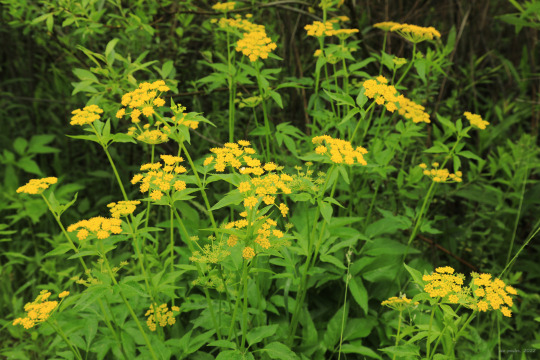


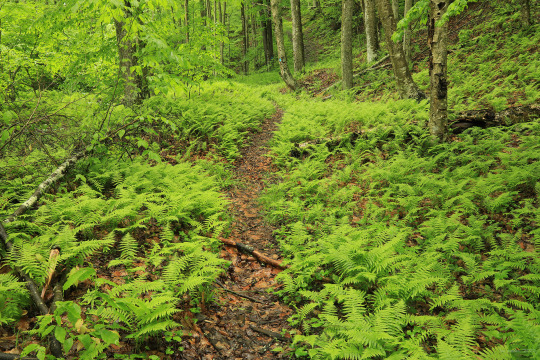



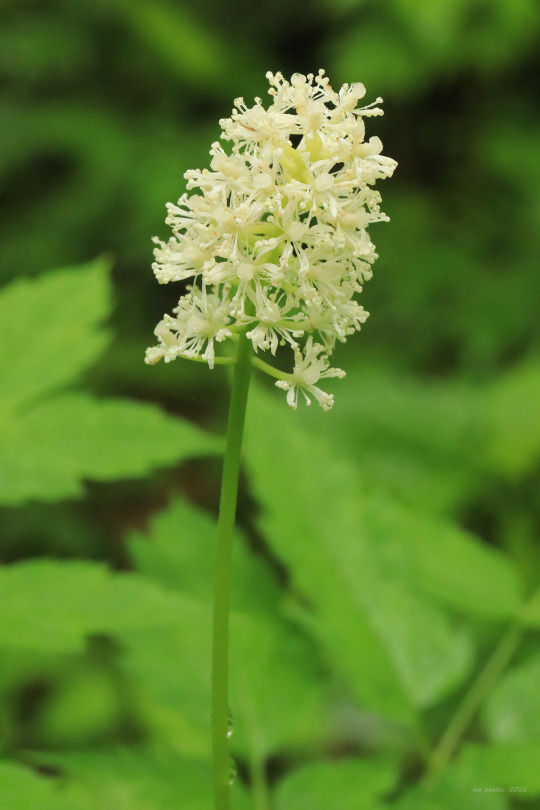
Gandy Creek and the Seneca Creek Backcountry together serve as the western gateways to the Spruce Knob-Seneca Rocks National Recreation Area in the Monongahela National Forest. This incredibly beautiful and wild area boasts one of the premier trail systems in the Mid-Atlantic region, with some 60 miles of trails winding through twenty-thousand acres of wilderness-quality red spruce and northern hardwood forests. Gandy and Seneca Creeks are also two of the most highly regarded brook trout streams in the eastern US. On Saturday, in a cool, clinging mist, I took a hike on one of the less traveled trails, the Leading Ridge Trail. The pulsating intensity of the new spring greens made them seem to glow in the dripping moisture.
From top: golden alexanders (Zizia aurea), the flagship spring wildflower of the mountains with its massed, golden flowerheads; Robin’s plantain (Erigeron pulchellus), a daisy-like spring aster with wide, lavender ray petals; brook lettuce (Micranthes micranthidifolia), whose edible leaves were once gathered in the spring by mountain folk for salads; and white baneberry (Actaea pachypoda), also known as doll’s eyes, because its white fruit in the fall resembles the china eyes once used in dolls.
#appalachia#vandalia#west virginia#monongahela national forest#seneca creek backcountry#gandy creek#leading ridge trail#allegheny mountains#zizia aurea#golden alexanders#erigeron pulchellus#robin's plantain#micranthes micranthidifolia#brook lettuce#deer tongue#mountain lettuce#branch lettuce#actaea pachypoda#white baneberry#doll's eyes
133 notes
·
View notes
Photo

ハルジオンにハムシ。よくこんな細い花弁にとまれるなあ(4月8日)
#Erigeron philadelphicus#Philadelphia fleabane#common fleabane#daisy fleabane#frost-root#marsh fleabane#poor robin's plantain#skervish#flowers#kwiaty#leaf beetle#Chrysomelidae#stonkowate#insects#owady#japan
3 notes
·
View notes
Text
Naturalized
"For all of us, becoming indigenous to a place means living as if your children's future mattered, to take care of the land as if our lives, both material and spiritual, depended on it." page 9
"Against the backdrop of that history, an invitation to settler society to become indigenous to place feels like a free ticket to a housebreaking party. It could be read as an open invitation to take what little is left. Can settlers be trusted to follow Nanabozho, to walk so that "each step is a greeting to Mother Earth"? Grief and fear still sit in the shadows, behind the glimmer of hope. Together they try to hold my heart closed."
"Our immigrant plant teachers offer a lot of different models for how not to make themselves welcome on a new continent. Garlic mustard poisons the soil so that native species will die. Tamarisk uses up al the water. Foreign invaders like loosestrife, kudzu, and cheat grass have the colonizing habit of taking over others' homes and growing without regard to limits. But Plantain is not like that. Its strategy was to be useful, to fit into small places, to coexist with others around the dooryard, to heal wounds. Plantain is so prevalent, so well integrated, that we think of it as native. It has earned the name bestowed by botanists for plants that have become our own. Plantain is not indigenous but "naturalized." This is the same term we use for the foreign-born when they become citizens in our country. They pledge to uphold the laws of the state. They might well uphold Nanabozho's Original Instructions, too." page 214
Braiding Sweetgrass, Robin Wall Kimmerer
0 notes
Photo
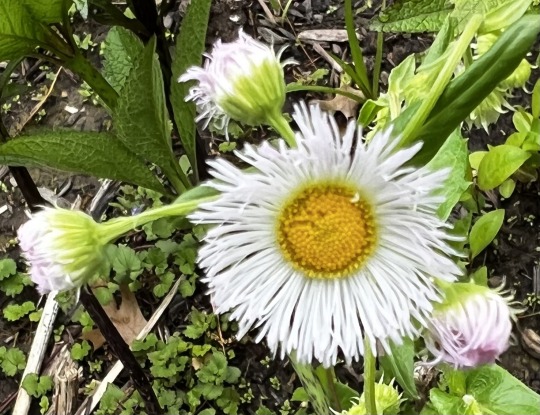
Erigeron Philadelphicus, Philadelphia Fleabane, Frost Root, Poor Robin’s Plantain, Skervish.
I found this the other day when weeding in preparation for Mulch Day this Sunday. It certainly wasn’t something I planted. It is supposed to be a rather invasive weed. But it does have Philadelphia in its name and is rather attractive so why not leave it be.
The name “eri” “geron” is Greek for “early in the morning” “old man,” referring I think to the fact that the fuzzy flowers close by mid-afternoon then open again early each morning. The “Fleabane” comes from the reputation of the plant as a flea killer. I guess the locals thought the plant was the bane of a flea’s existence, though that is rather dramatic for the simple flea. And I very much doubt it really keeps fleas away.
A number of First Nation Tribes used the plant for a variety of medicinal purposes. The Cherokee made a poultice from the plant to cure headaches. Other tribes made a tea out of the roots or burned the leaves for incense to treat head colds and coughs.
The Ancient Greeks somehow figured out that hawks used the sap of the plant to sharpen their eyesight. If true, it tells you how smart were both those Greeks and the hawks.
The flowers are really quite nice, like tiny daisies on steroids. The number of white petals per flower must be in the hundreds. What is really interesting is that the tiny tips of the back of the petals have an imperceptible pinkish hue so when the blooms close and the petals are joined each night the pink is revealed.
I really like the name Poor Robin’s Plantain but can find nothing to explain what made Robin so poor or how the plant can be a substitute for delicious plantains.
0 notes